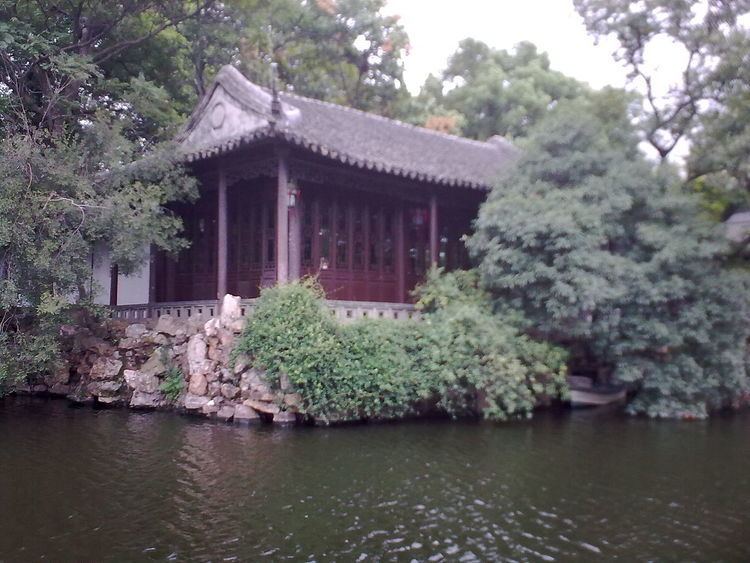Location China Criteria i, ii, iii, iv, v Extensions 2000 Phone +86 512 6519 4375 UNESCO World Heritage Site inscription 1997 | Type Cultural UNESCO region Asia-Pacific Province Jiangsu Extension 2000 | |
 | ||
Reference [whc.unesco.org/en/list/813 813] Address 3 Canglangting St, 沧浪区 Suzhou Shi, Jiangsu Sheng, China, 215000 Similar Lion Grove Garden, Lingering Garden, Humble Administrator's Garden, Master of the Nets Garden, Classical Gardens of Suzhou | ||
Canglang pavilion suzhou jiangsu china
The Canglang Pavilion (simplified Chinese: 沧浪亭; traditional Chinese: 滄浪亭; pinyin: Cāng Làng Tíng; Suzhou Wu: Tshaon laon din, [tsʰɑ̃ lɑ̃ din]), variously translated as the Great Wave Pavilion, Surging Wave Pavilion, or Blue Wave Pavilion, is one of the Classical Gardens of Suzhou that are jointly recognized as a UNESCO World Heritage Site. It is located at 3 Canglangting Street in Suzhou, Jiangsu province, China.
Contents
- Canglang pavilion suzhou jiangsu china
- China canglang pavilion in suzhou 2012 03 05 mon 1125hrs
- History
- Design
- References
China canglang pavilion in suzhou 2012 03 05 mon 1125hrs
History
The Canglang Pavilion was built in 1044 CE by the Song dynasty poet Su Shunqin (1008–1048), on the site of a pre-existing imperial flower garden c 960 CE. It is the oldest of the UNESCO gardens in Suzhou, keeping its original Song dynasty layout. The name is derived from a verse in the poem Fishermen by Qu Yuan (ca. 340 BCE-278 BCE), a poet from the southern state of Chu during the Warring States period, in his book Songs of the South, "If the Canglang River is dirty I wash my muddy feet; If the Canglang River is clean I wash my ribbon". This verse alludes to an honest official who removes himself from politics rather than act in a corrupt manner. Su Shunqing choose this to express his feelings after his removal from office.
After his death the garden passed through many owners and fell into disuse until 1696 CE when it was restored by Song Luo, the governor of Jiangsu Province. In 1827 ownership was transferred to governor Tao Zhu and again in 1873 ownership was transferred to governor Zhang Shusheng. In 1955 the garden was opened to the public and in 2000 it was added to the UNESCO World Cultural Heritage Monuments.
Design
The 1.6 ha garden is divided into two main sections. The garden is sited on a branch of the Fengxi Stream which forms a lotus pond. The garden has 108 windows each one with a unique design.
